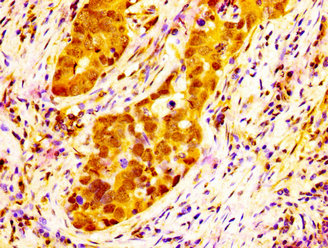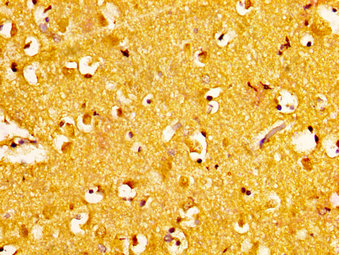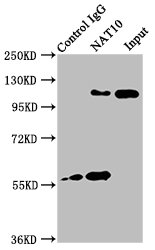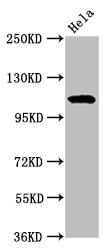RNA cytidine acetyltransferase that catalyzes the formation of N(4)-acetylcytidine (ac4C) modification on mRNAs, 18S rRNA and tRNAs. Catalyzes ac4C modification of a broad range of mRNAs, enhancing mRNA stability and translation. mRNA ac4C modification is frequently present within wobble cytidine sites and promotes translation efficiency. Mediates the formation of ac4C at position 1842 in 18S rRNA. May also catalyze the formation of ac4C at position 1337 in 18S rRNA. Required for early nucleolar cleavages of precursor rRNA at sites A0, A1 and A2 during 18S rRNA synthesis. Catalyzes the formation of ac4C in serine and leucine tRNAs. Requires the tRNA-binding adapter protein THUMPD1 for full tRNA acetyltransferase activity but not for 18S rRNA acetylation. In addition to RNA acetyltransferase activity, also able to acetylate lysine residues of proteins, such as histones, microtubules, p53/TP53 and MDM2, in vitro. The relevance of the protein lysine acetyltransferase activity is however unsure in vivo. Activates telomerase activity by stimulating the transcription of TERT, and may also regulate telomerase function by affecting the balance of telomerase subunit assembly, disassembly, and localization. Involved in the regulation of centrosome duplication by acetylating CENATAC during mitosis, promoting SASS6 proteasome degradation.










